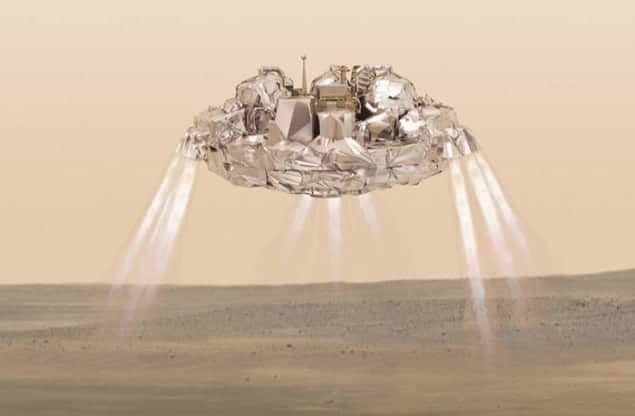
A European-led mission to Mars is feared to have been lost after it failed to communicate that it had successfully landed on the red planet. The lander – called the Entry, Descent and Landing Demonstrator Module (EDM) – is part of the Trace Gas Orbiter (TGO) mission that arrived at Mars only a few days ago, following its launch earlier this year by the European Space Agency (ESA). Both missions are a collaboration between ESA and the Russian space agency Roscosmos. Given that the probe has only enough energy stored in its battery to last up to 10 days, scientists are now in a race against time to figure out what could have gone wrong as the probe descended through the martian atmosphere.
The EDM, which is also known as Schiaparelli, successfully separated from the TGO on 16 October and took around three days to reach the surface of Mars. Yesterday, it entered the planet’s atmosphere at about 21,000 km/h and was supposed to decelerate using aerobraking before deploying a parachute. However, at some point during descent, ESA lost the signal from Schiaparelli that it was monitoring via the Giant Metrewave Radio Telescope near Pune, India.
It is currently unknown whether Schiaparelli fired a thruster to brake just before landing on the surface. During landing, the 577 kg probe was supposed to have taken images of the surface of Mars as well as other data such as pressure and temperature. In the coming days, scientists will listen to possible signals from the lander through orbiting probes such as ESA’s Mars Express mission and NASA’s Mars Reconnaissance Orbiter. “It is clear that these are not good signs,” Paolo Ferri, ESA’s head of mission operations told reporters at a press briefing yesterday.
Towards ExoMars
Yet there was some good news for the ESA team. The TGO has successfully entered into a highly elliptical orbit around Mars. In January 2017 ESA scientists will manoeuvre the TGO into a more circular orbit with an altitude of 400 km. Its four instruments include spectrometers, high-resolution cameras and a neutron detector, which will map Mars for sources of methane and also chart hydrogen below Mars’s surface up to a depth of around 1 m. After a calibration period, the TGO is expected to start operations in December 2017, and will then operate for five years.
It is currently unclear what the possible failure of the EDM will mean for the next part of the joint mission between ESA and Roscosmos. The ExoMars rover, which is due to launch in 2020, will carry a drill and a suite of instruments dedicated to exobiology and geochemistry research, searching for possible signs of life, characterizing the water and geochemical distribution of the surface, and identifying any hazards for future manned missions to the planet. ExoMars is expected to use the same landing techniques as the EDM.



